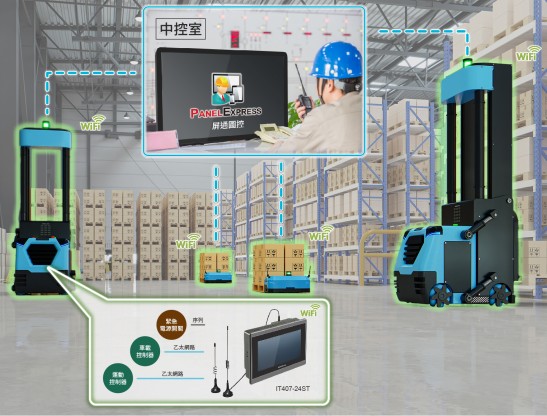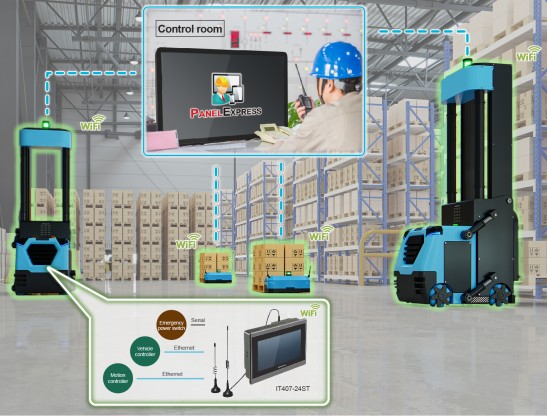AGV無人搬運車
IT407-24ST adopted a 24V DC power supply for HMI and is equipped with a touch screen; it would be more accessible to set up the AGVs. In addition, the built-in dual Ethernet ports are connected to the car controller and motion controller. Furthermore, they can connect to the serial port to emergency power switches and current switches. More importantly, IT407-24ST uses wireless network communication to help the AGVs' data be uploaded entirely to the control room without topography restriction and prevent too much wiring from blocking the AGVs running route.



